DOE’s Jefferson Lab has hired Tisca Dorsey as a Director of Business and Finance. In this role, she will be primarily responsible for the development and implementation of the lab’s contracting approach and strategy. She took on this role Feb. 16.

news, journals and articles from all over the world.

DOE’s Jefferson Lab has hired Tisca Dorsey as a Director of Business and Finance. In this role, she will be primarily responsible for the development and implementation of the lab’s contracting approach and strategy. She took on this role Feb. 16.
The U.S. Department of Energy (DOE) today announced awards totaling more than $68 million that will go to 53 small businesses that are solving scientific problems. Projects include developing tools for climate research and advanced materials and technologies for clean energy conversion. Understanding the climate and the ability to convert and store energy are instrumental to meeting President Biden’s goal of a completely clean electrical grid by 2035 and net-zero greenhouse-gas emissions by 2050.
In the past several years, nuclear physics researchers have initiated a flurry of machine learning projects and published many papers on the subject. A new survey by 18 authors from 11 institutions summarizes this work to provide an educational resource and a roadmap for future endeavors in the field.
Let’s see, thought James Vary, how can we have a little fun with the name of our $1 million nuclear physics project?
Characterizing plutonium is important to environmental studies, nuclear plant and materials safety, and studies of nucleosynthesis and neutron star mergers. Scientists therefore need ways to detect ultra-trace amounts of plutonium. Researchers have now used special lasers to study the fingerprints of plutonium’s photoionization. The technique allowed researchers to identify ultra-trace amounts of plutonium atoms at record levels of efficiency.
The protons and neutrons that build the nucleus of the atom frequently pair up in fleeting partnerships called short-range correlations. These can form between a proton and a neutron, between two protons, or between two neutrons. Scientists recently discovered that in helium-3 and tritium, which have small, light nuclei, some types of correlations are less common than they are in larger, heavier nuclei.
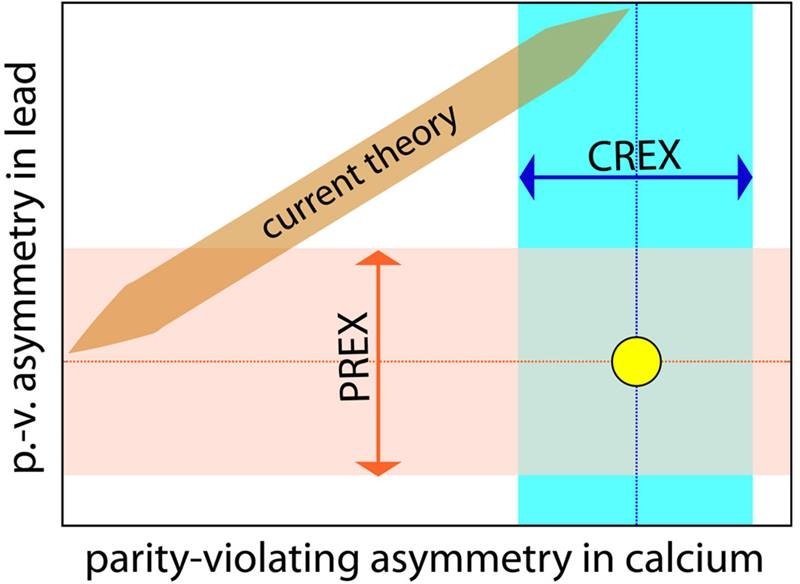
Recent experiments involving a tiny left-right asymmetry in electron scattering off lead-208 and calcium-48 indicate a disagreement between the experiments’ results and the predictions of global nuclear models. This result indicates a need to investigate limitations of current nuclear models or other sources of uncertainty. This has repercussions for scientists studying topics from neutron skins to nuclear symmetry energy to neutron star physics.
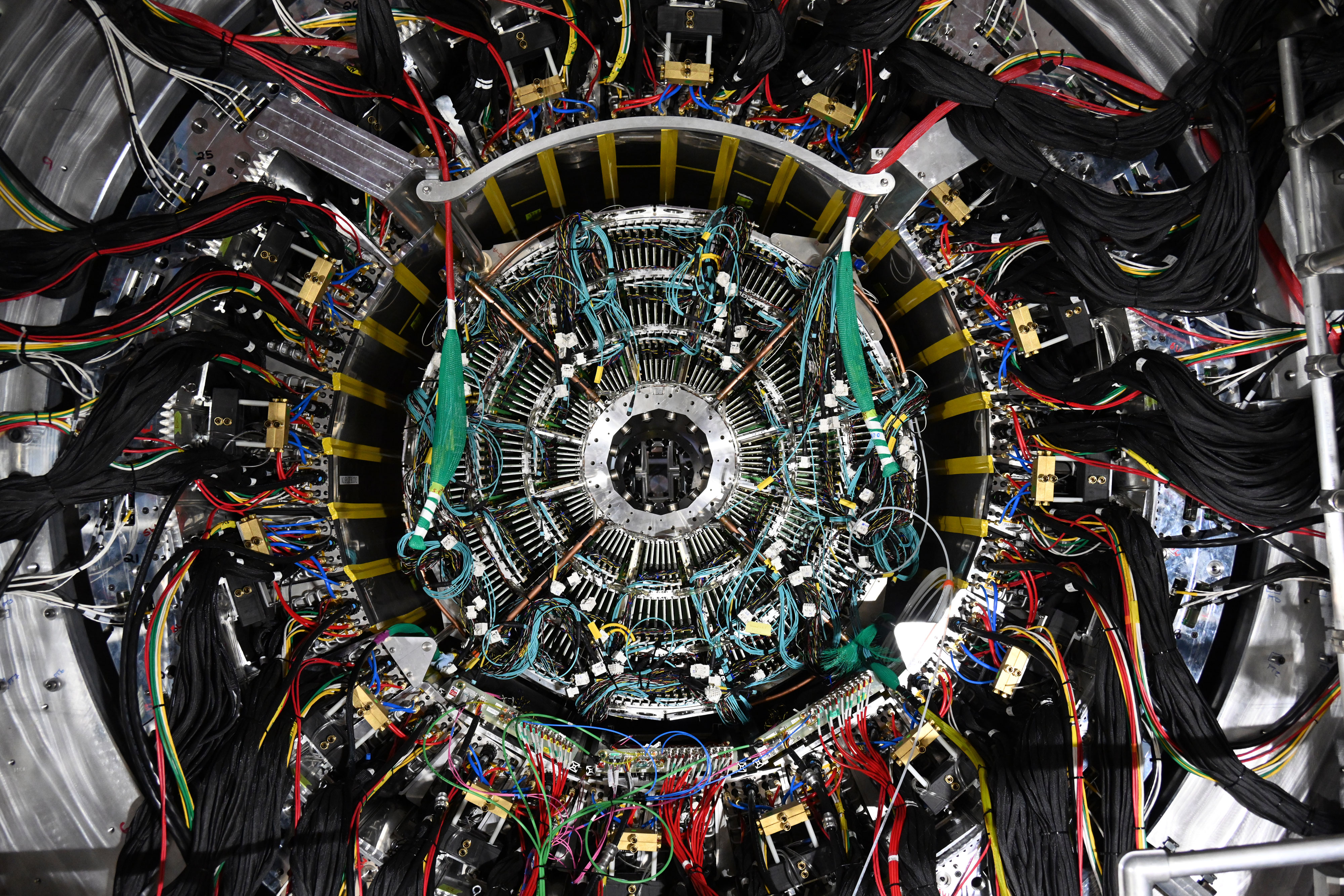
Experts assembling sPHENIX, a state-of-the-art particle detector at the U.S. Department of Energy’s Brookhaven National Laboratory, successfully installed a major tracking component on Jan. 19. The Time Projection Chamber, or TPC, is one of the final pieces to move into place before sPHENIX begins tracking particle smash-ups at the Relativistic Heavy Ion Collider (RHIC) this spring.
Today, the U.S. Department of Energy (DOE) announced $9.1 million in funding for 13 projects in Quantum Information Science (QIS) with relevance to nuclear physics. Nuclear physics research seeks to discover, explore, and understand all forms of nuclear matter that can exist in the universe – from the subatomic structure of nucleons, to exploding stars, to the emergence of the quark-gluon plasma seconds after the Big Bang.
Nine postdoctoral appointees were recognized with Postdoctoral Performance Awards.
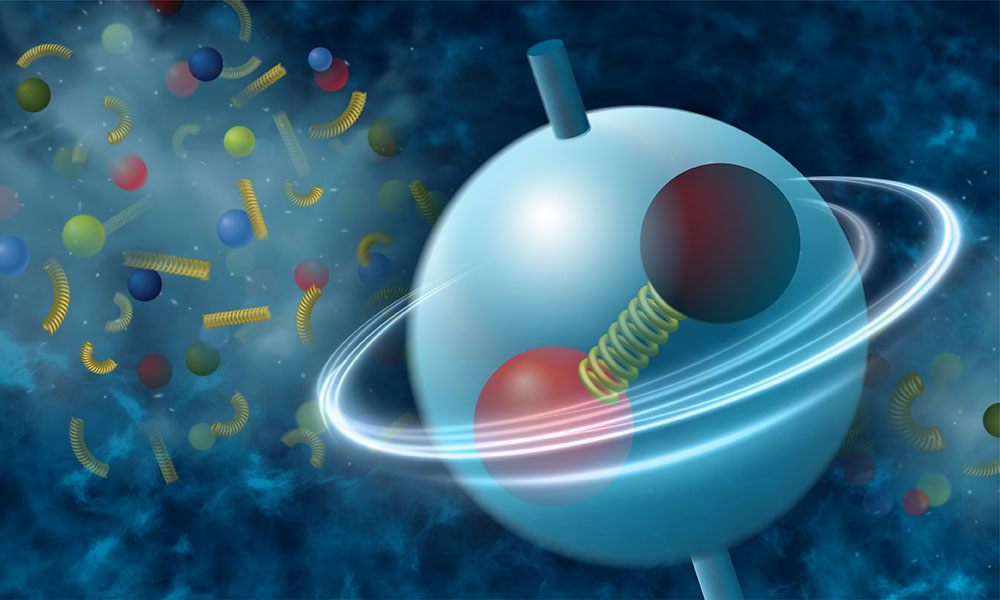
Given the choice of three different “spin” orientations, certain particles emerging from collisions at the Relativistic Heavy Ion Collider (RHIC), an atom smasher at Brookhaven National Laboratory, appear to have a preference. Recent results reveal a preference in global spin alignment of particles called phi mesons.
Nuclear physicists have found a new way to use the Relativistic Heavy Ion Collider (RHIC)—a particle collider at the U.S. Department of Energy’s (DOE) Brookhaven National Laboratory—to see the shape and details inside atomic nuclei. The method relies on particles of light that surround gold ions as they speed around the collider and a new type of quantum entanglement that’s never been seen before.
Researchers are combining experimental, theoretical, and observational data on neutron stars to constrain the equation of state (EOS) and to glean the composition of their interiors. Different techniques probe the EOS at different densities, thereby creating a “density ladder” that aims to connect the various rungs. The findings indicate a possible phase transition in the interior of neutron stars.
The proton is the only composite building block of matter that is stable in nature, making its properties key to understanding the formation of matter. A team of physicists measured the proton’s electric polarizability, which characterizes the proton’s susceptibility to deformation, or its “stretchability,” in the presence of a photon’s electromagnetic field. The results reveal a puzzling new structure – a bump in the polarizability that nuclear theory cannot explain.
When the nuclei of atoms are about to collide in an experiment, their centers never perfectly align along the direction of relative motion, leading to complex collisions. A deblurring algorithm from optics can help nuclear physicists examine the pattern of emissions from these collisions as if the initial nuclear centers were under tight control.
In a recent study, Argonne National Laboratory researchers showed how artificial intelligence could help pinpoint the right types of molten salts for nuclear reactors.
A new computational analysis by theorists at Brookhaven National Laboratory and Wayne State University supports the idea that photons (a.k.a. particles of light) colliding with heavy ions can create a fluid of “strongly interacting” particles. In a new paper they show that calculations describing such a system match up with data collected by the ATLAS detector at Europe’s Large Hadron Collider (LHC).
Argonne scientists were awarded Scientific Discovery through Advanced Computing projects in nuclear and high energy physics, and Earth system model development. They will partner with DOE national labs to connect experts and high performance computers.
Today, the U.S. Department of Energy (DOE) announced $11.24 million for five topical theory collaborations in nuclear physics (NP). These projects bring together leading nuclear theorists to collaboratively focus on solving challenging problems central to advancing knowledge in nuclear physics.
Efforts to harness the power of supercomputers to better understand the hidden worlds inside the nucleus of the atom recently received a big boost. A project led by the U.S. Department of Energy’s (DOE’s) Thomas Jefferson National Accelerator Facility is one of three to split $35 million in grants from the DOE via a partnership program of DOE’s Scientific Discovery through Advanced Computing (SciDAC). The $13 million project includes key scientists based at six DOE national labs and two universities, including Jefferson Lab, Argonne National Lab, Brookhaven National Lab, Oak Ridge National Lab, Lawrence Berkeley National Lab, Los Alamos National Lab, Massachusetts Institute of Technology and William & Mary.
Scientists measuring the nucleus of calcium-48 to determine how its 20 protons and 28 neutrons are distributed inside its nucleus found that the protons and neutrons aren’t simply sprinkled throughout the nucleus. Instead, they form a neutron-rich “thin skin” around a core of evenly distributed protons and neutrons. This skin is thinner than many theoretical models predicted and not consistent with expectations based on recent observations of lead’s thick skin.
Enrico Fermi’s Chicago Pile 1 experiment in 1942 launched an atomic age, an unrivaled national laboratory system, fleets of submarines, cancer treatments and the unending promise of clean nuclear energy. Argonne National Laboratory builds on its legacy.
A research collaboration between Argonne and the University of North Carolina at Chapel Hill produced a paper that examines how the nucleus of nickel-64 reacts when exposed to energy.

The U.S. Department of Energy’s Brookhaven National Laboratory has named Luisella Lari as Project Manager for the Electron-Ion Collider (EIC)—a one-of-a-kind nuclear physics research facility that will offer a closer look at the building blocks of matter—effective Oct. 3, 2022.
Scientists have begun turning to new tools offered by machine learning to help save time and money. In the past several years, nuclear physics has seen a flurry of machine learning projects come online, with many papers published on the subject. Now, 18 authors from 11 institutions summarize this explosion of artificial intelligence-aided work in “Machine Learning in Nuclear Physics,” a paper recently published in Reviews of Modern Physics.

The U.S. Department of Energy’s Thomas Jefferson National Accelerator Facility has appointed Patrick Carsten Achenbach as the new leader of Jefferson Lab’s Experimental Hall B. The appointment comes after an international search.
Nuclear physicists have experimentally confirmed the existence of the tetraneutron, a meta-stable nuclear system that can decay into four free neutrons. Researchers have predicted the tetraneutron’s existence since 2016. The new results, which agree with predictions from supercomputer simulations, will help scientists understand atomic nuclei, neutron stars, and other neutron-rich systems.
Colliding atomic nuclei at very high energies “melts” the boundaries of individual protons and neutrons, setting quarks and gluons to form a quark-gluon plasma (QGP). Quarks or gluons in the colliding ions sometimes scatter off one another and then split, forming parallel sprays of particles called jets. Tracking how jets lose energy, called “quenching,” allows scientists to learn about the QGP and the nuclear strong force. New results find that some quarks lose energy even before they split to form a jet.
Nuclear physicists studying particle collisions at the Relativistic Heavy Ion Collider (RHIC) have new evidence that particles called gluons reach a steady “saturated” state inside the speeding ions.
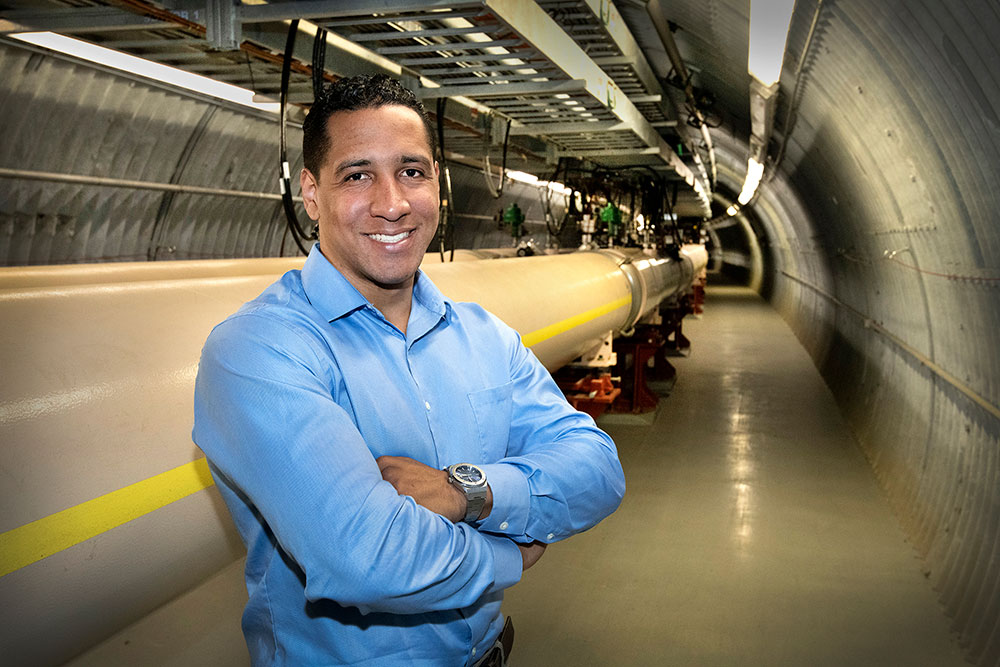
Jean Clifford (Cliff) Brutus, an engineer at the U.S. Department of Energy’s (DOE) Brookhaven National Laboratory, has a cool job–literally. He’s developing components to keep particle beams circulating in the Lab’s Relativistic Heavy Ion Collider (RHIC) cool.
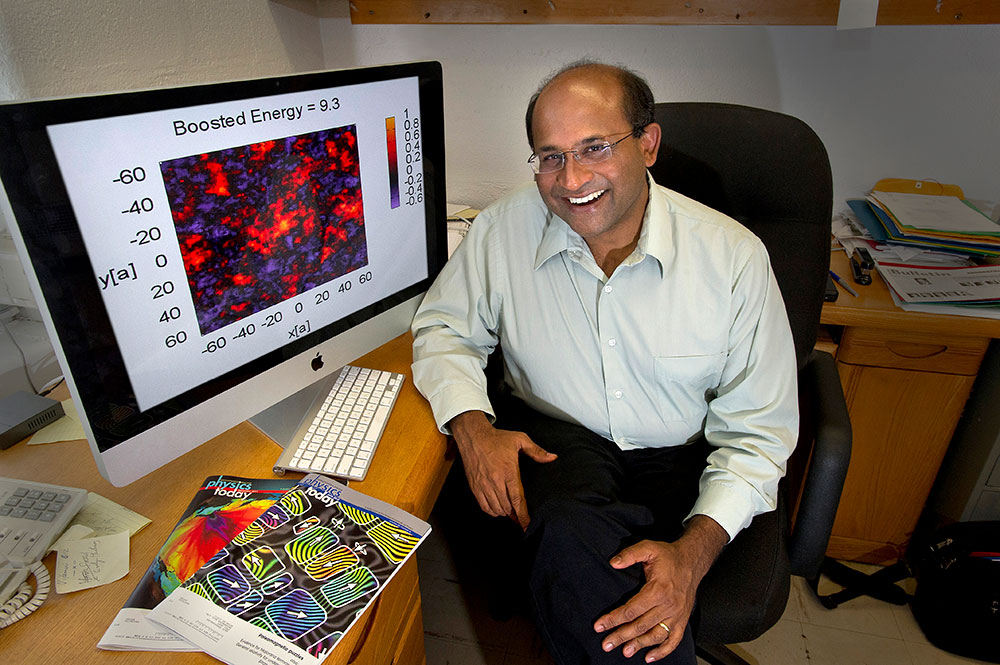
The Simons Foundation has announced a new research collaboration to explore the “glue” that holds the visible matter of the universe together. This team will delve into the details of quantum chromodynamics (QCD) — the theory that describes the interactions among the most fundamental building blocks of visible matter.
Today, the U.S. Department of Energy (DOE) awarded more than $3.6 million with a focus on broadening and diversifying the nuclear and particle physics research communities through research traineeships for undergraduates from Historically Black Colleges and Universities (HBCUs) and other Minority Serving Institutions (MSIs). The goal of this program is to increase the recruitment and retention of students from groups under-represented in nuclear physics and to create new partnerships with HBCUs and MSIs. Only by accessing the broadest possible pool of potential physicists can the community produce the best possible science.
Scientists have found a way to “see” inside deuterons, the simplest atomic nuclei, to better understand how particles called gluons are arranged within the deuteron. These collisions can also break the deuteron apart, giving insights into what holds the proton and neutron together. The research helps scientists understand how nuclei emerge from quarks and gluons, and how the masses of nuclei are dynamically generated by gluons.
The 2022 JSA Postdoctoral Prize winner, Arkaitz Rodas, characterizes lesser-known particles to help physicists understand what holds matter together. Rodas will characterize light mesons using computational mathematical tools for his prize-winning project.
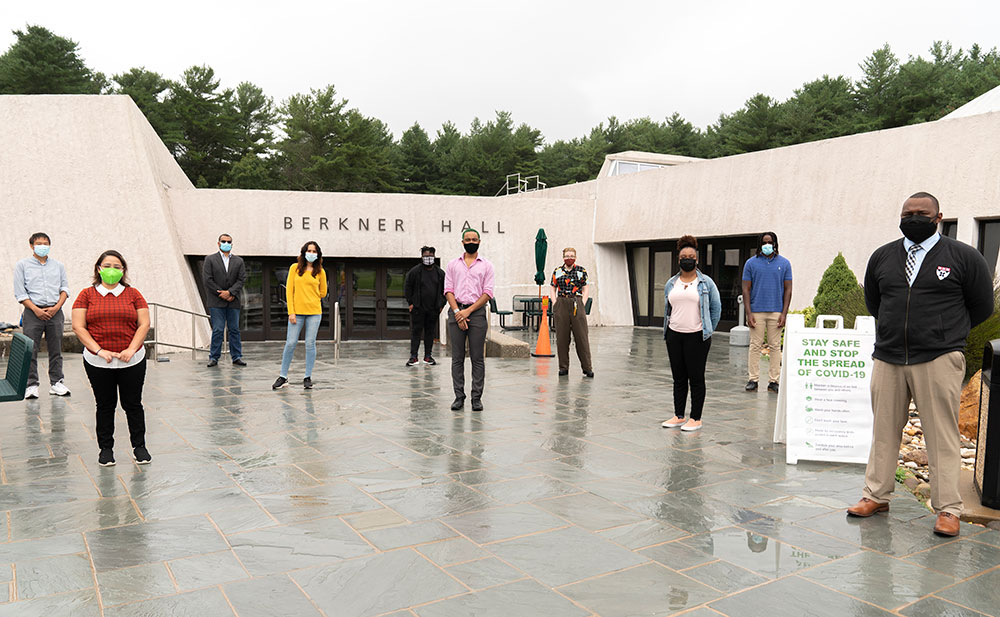
Many of the nuclear physicists tuning in to the 2022 Relativistic Heavy Ion Collider (RHIC) & AGS (Alternating Gradient Synchrotron) Users’ Meeting participated in a half-day workshop on June 8 dedicated to diversity, equity, and inclusion (DEI) and workforce development in the nuclear physics community.
To solve a long-standing puzzle about how long a neutron can “live” outside an atomic nucleus, physicists entertained a wild but testable theory positing the existence of a right-handed version of our left-handed universe.
Iowa State University’s James Vary and an international team of nuclear physicists used supercomputers to theorize and predict that a four-neutron structure, a tetraneutron, could form for just billions of billionths of a second. Experiments in Japan have now confirmed the reality of a tetraneutron.
Today, U.S. Secretary of Energy Jennifer Granholm announced ten U.S. scientists and engineers as recipients of the prestigious Ernest Orlando Lawrence Award for their exceptional contributions in research and development supporting the Energy Department’s missions in science, energy, and national security. Established in 1959, the Lawrence Award recognizes mid-career U.S. scientists and engineers who have advanced new research and scientific discovery in nine categories representing the broad science and engineering missions of DOE and its programs. The awards are among the longest running and most prestigious science and technology awards bestowed by the U.S. Government.
The international KArlsruhe TRItium Neutrino (KATRIN) experiment in Germany recently reported a new upper limit on the mass of the neutrino. This limit—0.8 electronvolts (eV)—is the lowerst scientists have achieved. As the results are confirmed and refined, they will help scientists better understand the neutrino and its role in the evolution of the universe.
At Lawrence Livermore National Laboratory, Andreas Kemp studies the interaction of intense, extremely short laser pulses with matter. This new field of research studies extreme nuclear physics reactions at rates far higher than those of current accelerator experiments.
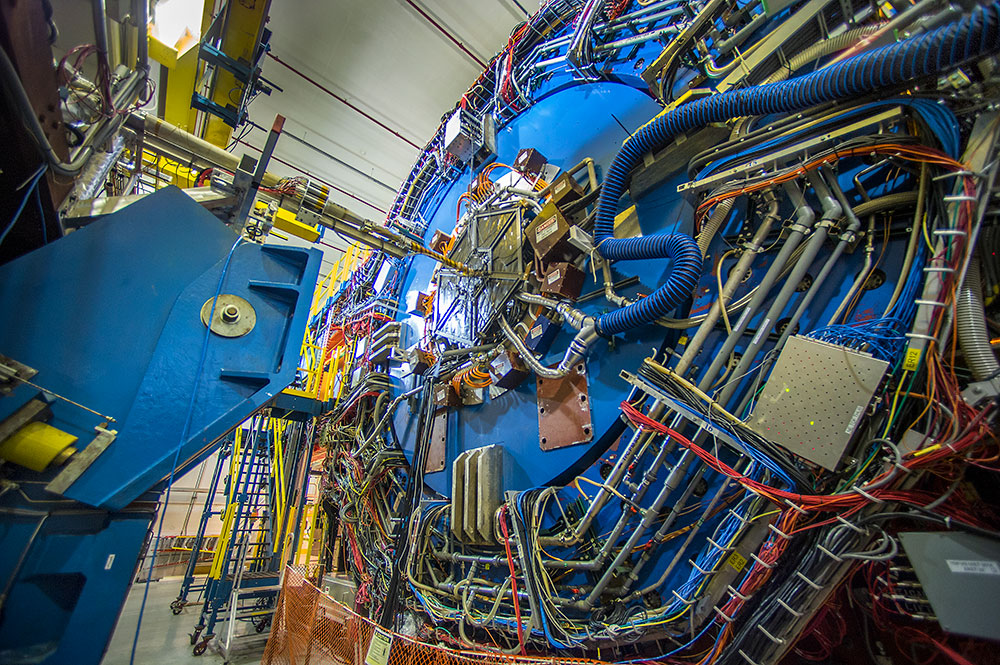
Scientists studying particle collisions at the Relativistic Heavy Ion Collider (RHIC) have revealed how certain particle-jets lose energy as they traverse the unique form of nuclear matter created in these collisions. The results should help them learn about key transport properties of this hot particle soup, known as a quark-gluon plasma (QGP).
A new flagship facility for nuclear physics has opened, and scientists from Oak Ridge National Laboratory have a hand in 10 of its first 34 experiments.
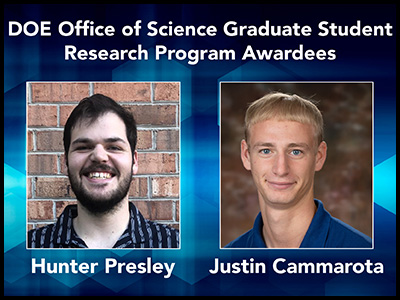
Two graduate students at Virginia universities who plan to conduct research at the U.S. Department of Energy’s Thomas Jefferson National Accelerator Facility have just received grants toward their projects. They are among 80 graduate students representing 27 states selected to receive support through the Office of Science Graduate Student Research (SCGSR) program’s 2021 Solicitation 2 cycle.
After running simulations on the world’s most powerful supercomputer, an international team of researchers has developed a theory for the nuclear structure and origin of carbon-12, the stuff of life. The theory favors the production of carbon-12 in the cosmos.
Theoretical physicists have proposed a new method to measure the speed of sound in quark-gluon plasma. The speed of sound is determined by a material’s properties, so measuring it helps scientists understand that material. These studies reveal the way quarks and gluons interact with each other and offers new insights on matter in the early Universe.
On Oct. 25, the U.S. Department of Energy’s Thomas Jefferson National Accelerator Facility welcomed U.S. Secretary of Energy Jennifer Granholm and honored guests for a short tour of the lab and briefing on its research mission and plans for the future.
Iowa State physicists are contributing their expertise and sending thousands of pounds of Ames-manufactured hardware to the sPHENIX experiment at Brookhaven National Laboratory in New York. The experiment’s particle detector is designed to explore the flowing, liquid-like, quark-gluon plasma.
Scientists from Argonne and Michigan State University have completed the first tests using a new particle accelerator to gain insights into the creation of carbon in stars.
The protective coatings are intended to extend the lifetime of the materials for applications in nuclear physics facilities.
New evidence suggests protons and neutrons go through a “first-order” phase transition to reach their melted state, a soup of quarks and gluons. This is a kind of stop-and-go change in temperature is similar to how ice melts: energy first increases the temperature.